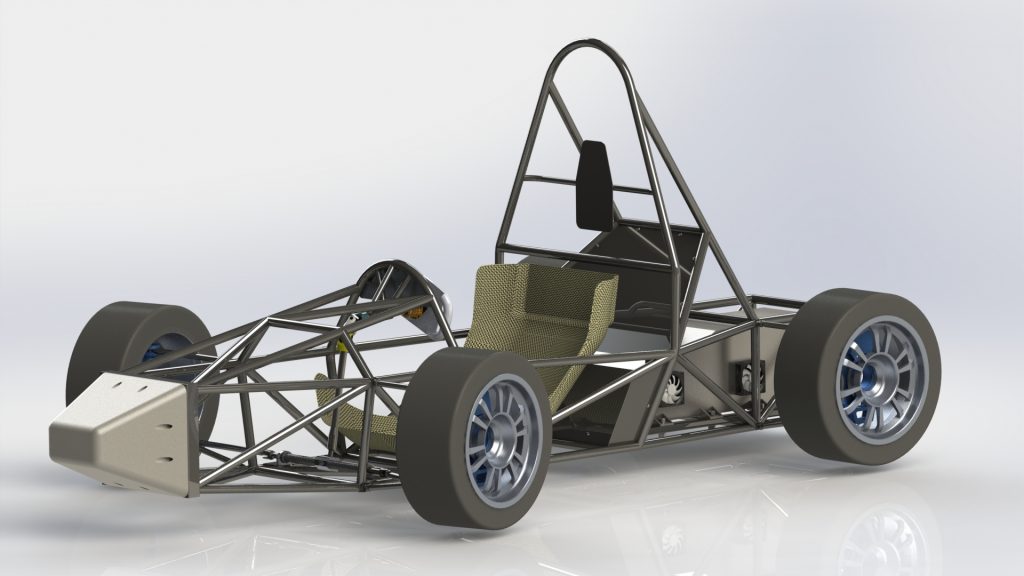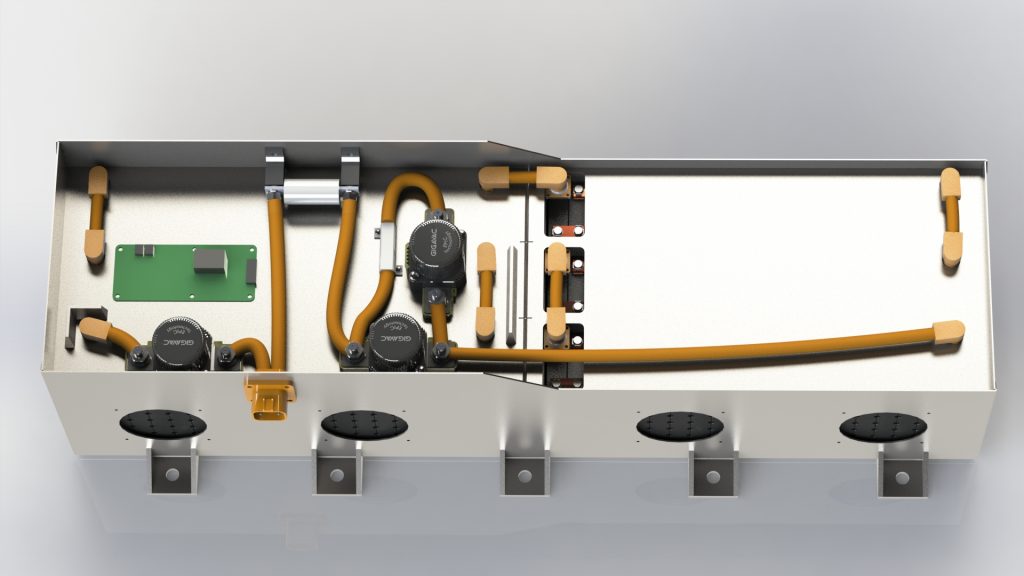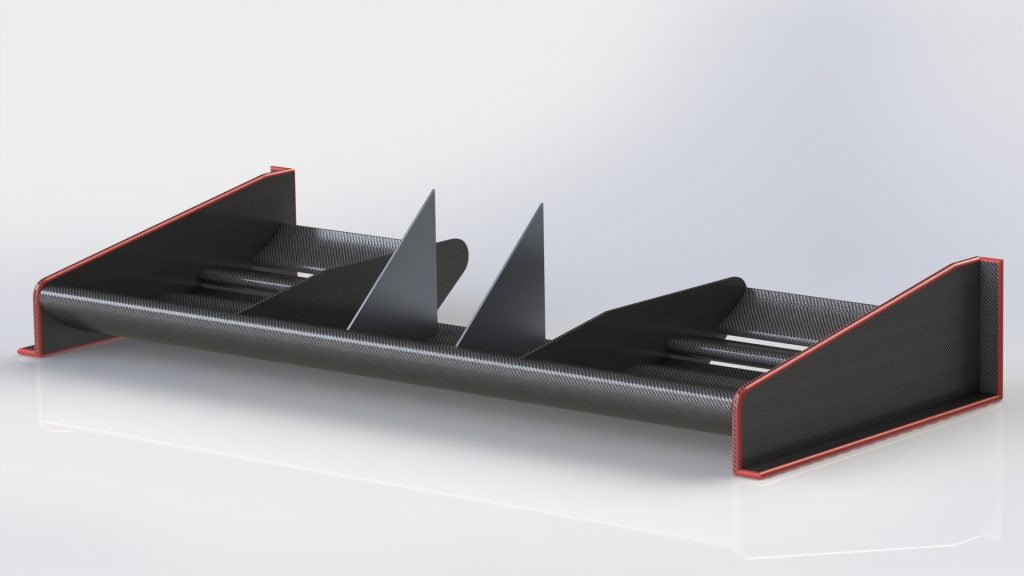TECHNICAL DEPARTMENTS
FRAME AND CHASSIS DEPARTMENT

The Chassis Department organizes and assembles the various components of the prototype, both virtually using the solid modeler Solidworks, and tangibly, by physically putting the vehicle together.
This department works on:
– Designing the chassis and carrying out structural analytical tests on it.
– Prototype dynamics; here we work on all of the mobile components (wheels, tires, steering wheel, suspension system) to make the driving experience as comfortable and effective as possible.
– Designing the braking system, carefully selecting every piece and, if needed, designing each and every component to ensure maximum safety.
– Packaging and weight distribution on the body of the prototype; this process entails working closely with all the other departments to best assemble the vehicle.
– Designing the supports, a step that directly follows the activities carried out in the previous point.
– Driver’s ergonomics, which entails ensuring that the vehicle will be driven in the best and most comfortable position.
– Assembling and improving the prototype (from assembling to setup).
The Chassis Department must follow very strict competition rules while carrying out its activities. Moreover, the structural analytical tests performed here are crucial to ensure driver safety and security.
ePOWERTRAIN DEPARTMENT

The Powertrain Department mainly works on the vehicle’s power supply system.
It is divided into three areas, each with separate tasks, which are:
– Designing and improving the SPM (surface permanent magnet) engines integrated in the wheels.
– Designing the battery pack to power the systems in the vehicle; this stage also includes the development of BMSs (Battery Management Systems) for the accumulators, which involve protections (overcurrent, short-circuits, overtemperature) and planning the charge/discharge cycles.
– Designing the inverters that control the synchronous motors by converting continuous current into variable frequency alternating current as established by the ECU.
The Powertrain department intensively cooperates with the Electronics department to maximise the control of all systems.
ELECTRONICS DEPARTMENT
The Electronics Department works on designing and dimensioning the various electronic systems in the vehicle, including security systems necessary as per competition guidelines.
This department mainly works on:
– Sensor acquisition cards that send data to the control unit for their elaboration.
– Dashboard electronics to enable monitoring of the parameters concerning vehicle status.
– The control unit, where all data from the sensors are processed, and which regulates the distribution of torque between the four engines (managing particular situations, such as skidding) and manages the telemetry data.
– Software needed for the microcontrollers, like predictive control systems for engines and telemetry.
AERODYNAMICS DEPARTMENT

The Aerodynamics Department works on researching, designing and creating the aerodynamic components for testing as well as the finished components.
This entails:
– Creating scale models to carry out aerodynamic testing.
– Creating aerodynamic components that are necessary as per competition rules (body, undertray).
– Creating other aerodynamic components, such as wings and sidepods.
– Creating the final components to then assemble the prototype (finished wings ready for installation, joints).
– Carrying out the simulations to test prototype performance once it is assembled.
Here we put into practice the notions acquired during modelling, fluid-dynamics simulation and programming courses. To design the prototype, we use CFD, CAD and CAE programmes and optimisations softwares (such as ANSYS, Esteco e Solidworks). The aerodynamic study is carried out both in 2D and 3D.
This department’s main aim is to study and analyse the vehicle’s aerodynamics.
SUPPORT DEPARTMENTS
BUSINESS DEPARTMENT
This department’s main activity is drafting the Business Plan, a document that explains and describes the Team’s project that must be submitted in order to enter the FSAE competition.
The Business Plan includes:
– The Executive Summary, a summary of the project.
– The Business Idea, main body of the Business Plan, where you will find more information about the project, its state of the art and future perspectives, and with mentions to technical aspects as well.
– The Marketing analysis, that serves to set the project in a potential business environment.
– The Competitive environment analysis, namely analysing the Team’s direct opponents.
– The Marketing strategy.
– The Organizational setup and the Management Team, in which we provide a description of the Team.
– The Timing Management, where project timings are established.
– The Financial Planning, that involves setting out costs and expenses for the project.
MARKETING DEPARTMENT
The Marketing department, on the other hand, curates the social side of the Team.
Here we manage and optimize all external communications, mainly thanks to:
– Activities to advertise the Team and the project, both for experts and for the lay public.
– Social media management, meaning curating the Team’s profiles on Facebook, Instagram, LinkedIn and Youtube.
– Running the website dedicated to the project and the competition in which we are participating.